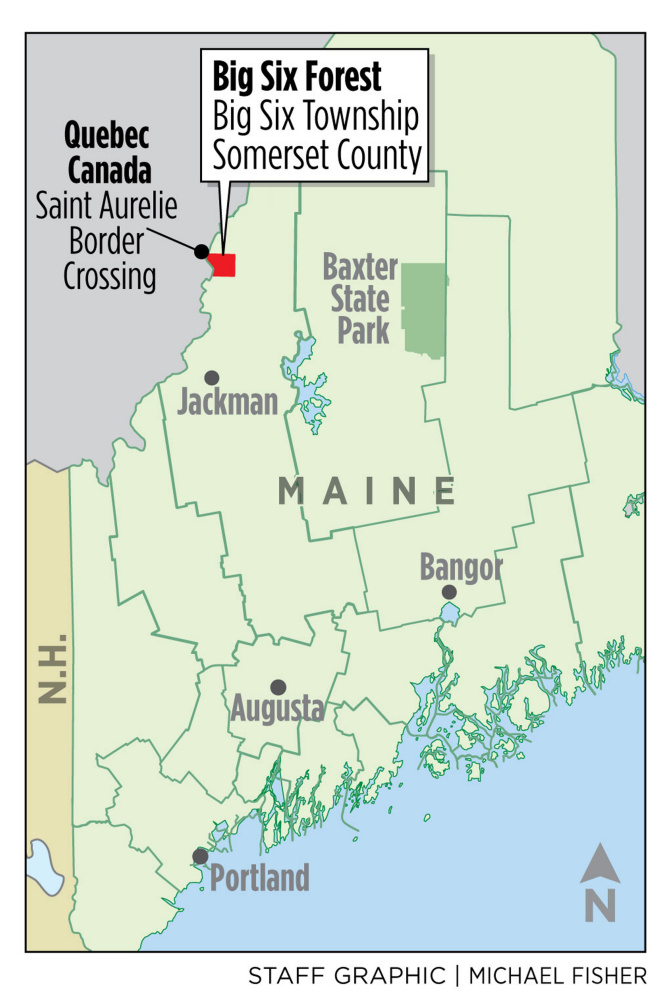AUGUSTA – Members of the Land for Maine’s Future board raised questions Tuesday about public access and recreation on a 23,000-acre property along the Maine-Quebec border that has drawn heightened scrutiny.
The board offered few public clues as to how the Big Six Forest or more than two dozen projects will fare in the intense competition for conservation funds.
Tuesday’s meeting was reserved for rapid-fire presentations from the groups seeking funding as well as board questions and public comments. On Thursday, the nine-member board will reconvene to make preliminary funding decisions, although all of the details are not expected to be available that day.
The highest-profile project is the Big Six Forest, which is seeking $1.25 million in LMF funds to help purchase a conservation easement on 23,056 acres north of Jackman. The project has already received $3.8 million from the federal Forest Legacy program but requires another $2.2 million in matching funds to complete the $6 million project.
Project applicants The Trust for Public Land and the Maine Department of Agriculture, Conservation and Forestry contend that the conservation easement – which extinguishes development rights on the land – is needed to protect roughly 4,000 acres of maple “sugarbush” that accounted for nearly 20 percent of Maine’s maple syrup production last year. The 340,000 maple taps makes Big Six one of the largest maple sugarbushes in the United States. Another 17,000 acres of the property is working forest, while the rest is wetlands.
J.T. Horn, senior project manager for The Trust for Public Land, said Big Six’s contribution to Maine’s maple syrup industry should qualify as a “statewide significant resource,” a designation that would earn the project more points in the complicated LMF scoring process.
Big Six landowner Paul Fortin of Madison has indicated that he might be forced to cut down the maple sugarbush or sell off camp lots to cover his mortgage without the $6 million in revenue from the conservation easements. Horn also urged LMF board members to think about the nighttime satellite images of the region showing the illumination of development in New England and Canada.
“Well this project is in the dark spot, and that’s a place where the Land for Maine’s Future board has invested in the past, but this property is also on the edge of the light,” Horn said. “So just what’s going on north of the border in Quebec is towns, farms. We’re about 90 minutes from Quebec City, So as you think about his property, don’t just look at it from … how far it is to drive here from Portland, but also think about what is going on on the other side of the border, which is a lot of civilization just a few miles above.”
One mandatory component of LMF conservation projects is that they be open and accessible for public recreation. Responding to board member Fred Bucklin’s questions on the topic, Horn said the land is accessible by private logging roads operated by North Maine Woods – a drive of 2.5 to 3 hours from Millinocket but somewhat closer from Pittston Farm. Neither Horn nor the board members mentioned that the fastest way to access the property for many Mainers would be to cross into Canada near Jackman and then back into Maine at Saint Aurelie, Quebec, a trip that requires a passport.
Board member Lisa Turner asked Horn about recreational activities on the property. Horn said all activities currently allowed – including hunting and fishing – would be allowed and that while no designated snowmobile trails exist within Big Six, the easement allows such uses plus two parking lots.
The project has been endorsed by conservation and outdoor recreation groups as well as Maine’s maple syrup industry.
But Big Six has faced an unusual amount of scrutiny, in part because of the challenge of accessing it by Maine roads. There is also speculation that LePage is backing the project – despite his outspoken criticism of LMF and opposition to other projects – because Fortin donated $27,500 to the governor or his political action committee.
Kerry Hegarty of Jackman, who works in the North Woods as a boundary marker, told the board that it doesn’t make any economic sense to cut the sugarbush when Maine’s maple syrup industry is “booming.” While he acknowledges the LMF project will allow the sugar maple operations – most of which are run by Quebec residents – to obtain a long-term contract, Hegarty said he believes the maple syrup industry “is being held hostage.”
“A conservation easement, I always thought, is supposed to conserve something,” Hegarty said. “I don’t understand what this is conserving because I don’t know of anyone who has ever cut a piped sugarbush. Once it is a commercial operation, the pipelines are up there.”
Two foresters and a land manager – from Jackman and Dover-Foxcroft – also submitted letters questioning the economics behind the LMF application.
In all, the LMF board received presentations on 25 applicants for funding that ran the gamut from the 23,000-acre Big Six project to a working waterfront application in Lubec and a 24-acre fee acquisition along the Royal River in Yarmouth. The board will meet again on Thursday to score projects and make allocations. The LMF program does not release the specific allocation amounts until all recipients have been notified, however.
Send questions/comments to the editors.




Success. Please wait for the page to reload. If the page does not reload within 5 seconds, please refresh the page.
Enter your email and password to access comments.
Hi, to comment on stories you must . This profile is in addition to your subscription and website login.
Already have a commenting profile? .
Invalid username/password.
Please check your email to confirm and complete your registration.
Only subscribers are eligible to post comments. Please subscribe or login first for digital access. Here’s why.
Use the form below to reset your password. When you've submitted your account email, we will send an email with a reset code.